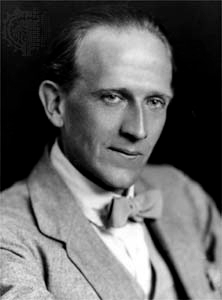Winnie-the-Pooh
Book Details
| Title: | Winnie-the-Pooh | ||
| Author: |
| ||
| Published: | 1926 | ||
| Publisher: | McClelland & Stewart, Limited | ||
| Tags: | children, fiction, Film Adaptation | ||
| Description: | [No description available. Suggest one here.] | ||
| Downloads: | 1,053 | ||
| Pages: | 72  |
Author Bio for Milne, A. A.

Milne is most famous for his two Pooh books about a boy named Christopher Robin after his son, Christopher Robin Milne, and various characters inspired by his son's stuffed animals, most notably the bear named Winnie-the-Pooh. Christopher Robin Milne's stuffed bear, originally named "Edward", was renamed "Winnie-the-Pooh" after a Canadian black bear named Winnie (after Winnipeg), which was used as a military mascot in World War I, and left to London Zoo during the war. "The pooh" comes from a swan called "Pooh". E. H. Shepard illustrated the original Pooh books, using his own son's teddy, Growler ("a magnificent bear"), as the model. The rest of Christopher Robin Milne's toys, Piglet, Eeyore, Kanga, Roo and Tigger, were incorporated into A. A. Milne's stories, two more characters - Rabbit and Owl - were created by Milne's imagination. Christopher Robin Milne's own toys are now under glass in New York where 750,000 people visit them every year.
The success of his children's books was to become a source of considerable annoyance to Milne, whose self-avowed aim was to write whatever he pleased and who had, until then, found a ready audience for each change of direction: he had freed pre-war Punch from its ponderous facetiousness; he had made a considerable reputation as a playwright (like his idol J. M. Barrie) on both sides of the Atlantic; he had produced a witty piece of detective writing in The Red House Mystery (although this was severely criticised by Raymond Chandler for the implausibility of its plot). But once Milne had, in his own words, "said goodbye to all that in 70,000 words" (the approximate length of his four principal children's books), he had no intention of producing any reworkings lacking in originality, given that one of the sources of inspiration, his son, was growing older.
In his literary home, Punch, where the When We Were Very Young verses had first appeared, Methuen continued to publish whatever Milne wrote, including the long poem "The Norman Church" and an assembly of articles entitled Year In, Year Out (which Milne likened to a benefit night for the author).
In 1930, Milne adapted Kenneth Grahame's novel The Wind in the Willows for the stage as Toad of Toad Hall. The title was an implicit admission that such chapters as Chapter 7, "The Piper at the Gates of Dawn", could not survive translation to the theatre. A special introduction written by Milne is included in some editions of Grahame's novel.--Wikipedia.
Available Formats
No book directory. Upload has not been completed.This book is in the public domain in Canada, and is made available to you DRM-free. You may do whatever you like with this book, but mostly we hope you will read it.
Here at FadedPage and our companion site Distributed Proofreaders Canada, we pride ourselves on producing the best ebooks you can find. Please tell us about any errors you have found in this book, or in the information on this page about this book.